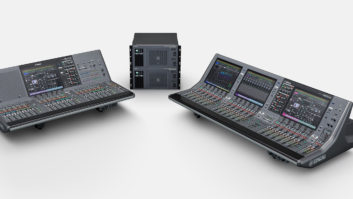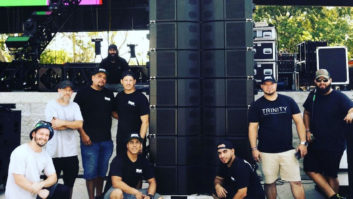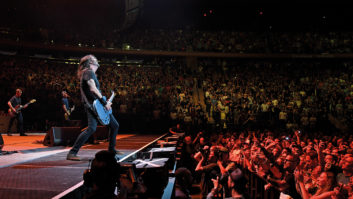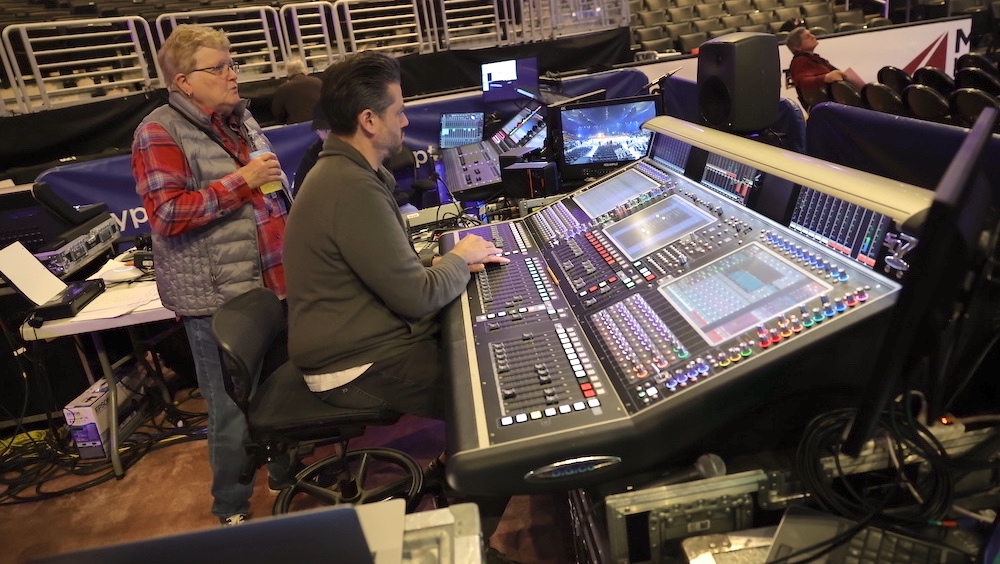
Los Angeles, CA (March 14, 2024)—The Grammy Awards audio production team made a big change this year, switching to a Cohesion P.A. system for the first time. Until recently, the speaker brand was used exclusively by Clair Global, which acquired ATK Audiotek, the Grammy show’s longtime production provider, in late 2021.
This year’s Grammy Awards production at the 21,000-capacity Crypto.com Arena (formerly named the Staples Center) in downtown Los Angeles included main left-right and side arrays of 56 total Cohesion CO12 boxes—14 per hang—plus six flown CP218 subs per side. Four back-of-house delays of eight CO10 boxes per array and six 300-level delays of six CO8s each completed the flown complement. A pair of ground-stacked CP218s and a pair of CP6s for front fill at the main stage rounded out the rig.
According to Michael Abbott, the Grammy show’s audio producer for the past several decades, when engineers for the artists performing on this year’s telecast were asked what P.A. system they’ve been using on tour, Cohesion was mentioned a lot. “I’m not saying that it’s unanimous,” he says, “but it’s accepted by the mainstream.” Cohesion became a stand-alone brand, separate from Clair Global, in late 2023.
ATK’s Jeff Peterson has been designing the Grammy house P.A. setup for many years and is also now FOH production mixer, introducing host and announcers’ mics, video package audio and the like into the mix for the live audience from his DiGiCo Quantum 338 console. “I’ve mixed on Cohesion a couple of times, but I had never designed with it,” says Peterson, who collaborated with Clair Global engineers on this year’s system. “I like the Cohesion prediction software—having the ability to see how the whole system is going to interact is nice.
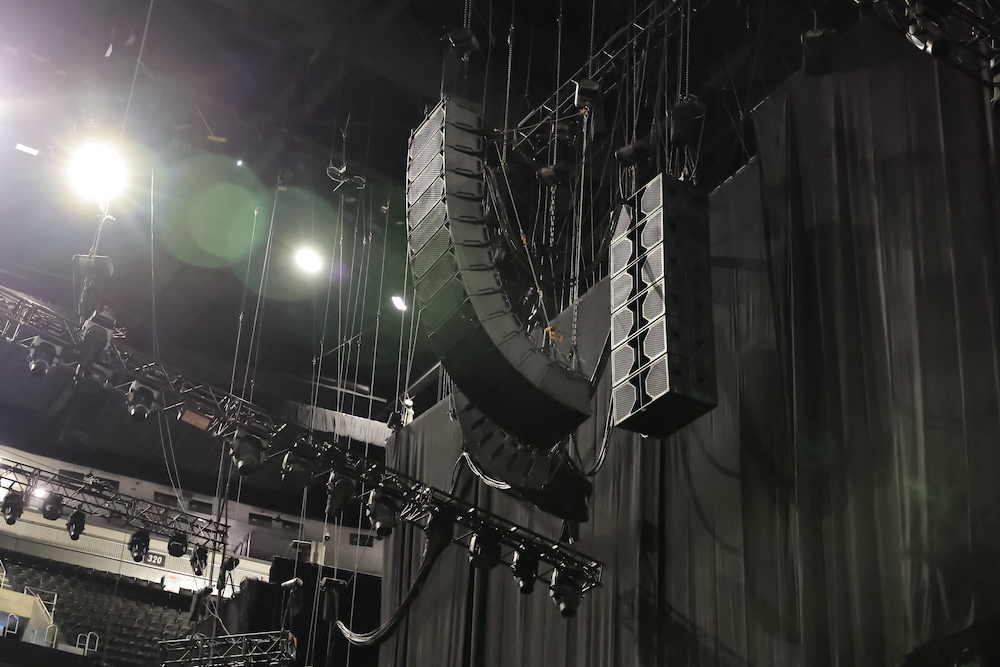
“It’s got the power and intelligibility over distance that I was looking for,” he adds. “The design for this room and show turned out to be almost identical to what we’ve done in the past. That proves the design is valid, regardless of the manufacturer’s speaker.”
This was the first time working the Grammy telecast for freelancer Jamie Pollock, the show’s FOH music mixer, positioned to Peterson’s right at a DiGiCo Quantum 7 console. Currently touring the world at FOH with Depeche Mode, and with Nine Inch Nails, Peter Gabriel and Jeff Beck also on his CV, Pollock has a sizable list of major broadcast music productions to his credit.
“There’s so much to do in such a short period of time,” Pollock says, noting that pages of updates were being delivered to him constantly during the rehearsal days. “You also have to listen to the PL at all times to catch the real-time changes that happen while you are mixing. With touring, you’re in a bubble, doing your daily routine, but with this show, there’s no settling in because things keep moving and it all happens quickly. I’m constantly saving presets, giving myself default starting points, and as I mix one act, I’m always saving parameters and trying to apply them to other segments.”
Every facet of the Grammy production is a collaborative affair. Pollock worked with Leslie Ann Jones, Grammy telecast advisor for house audio and director of music and scoring at Skywalker Sound, as well as the performing artists’ touring engineers to get the house mix just right.
“What was great about Leslie is that she is also an engineer,” Pollock adds. “She can start talking about a technique to bring out intelligibility in a vocal and I would know instantly where she wanted to go and what needed to be done. Or she’d say, ‘Add a little 2k on the clarinet’—and she would be right. They want the detail, the definition, the little nuances to pop out in the room as well. It’s nice to be able to place the vocal more in the mix like a record over maybe where you need to have it in an arena. It was great having that other set of ears and being able to focus on those finer details.”




